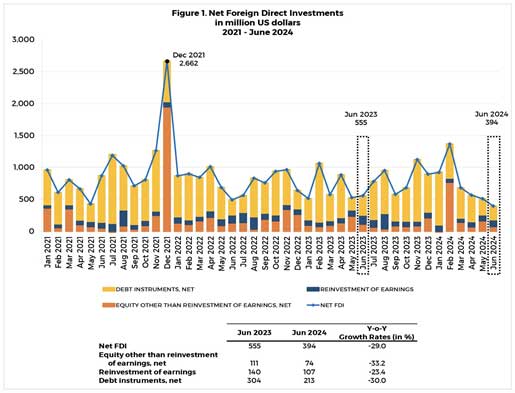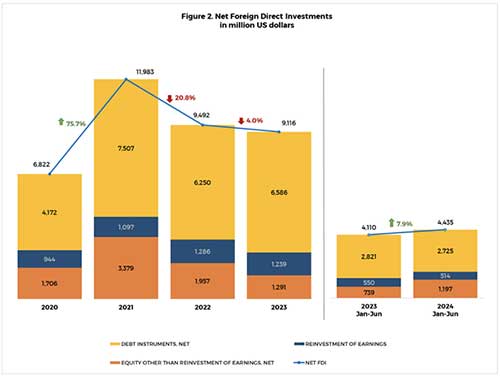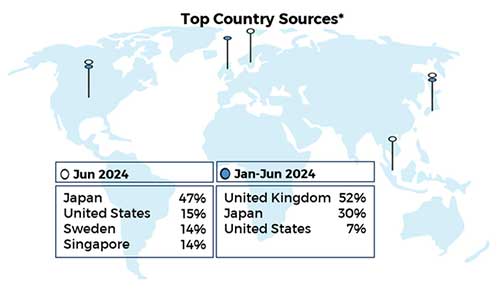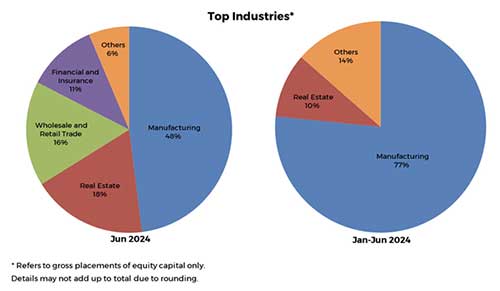
Foreign direct investment (FDI) recorded US$394 million net inflows in June 2024, lower by 29.0 percent than the US$555 million net inflows posted in June 2023 (Figure 1).1, 2
The decline resulted from lower net inflows across all major FDI components. In particular, nonresidents’ net investments in debt instruments fell by 30.0 percent to US$213 million from US$304 million in June 2023.3
Likewise, nonresidents’ net investments in equity capital (other than reinvestment of earnings) and their reinvestment of earnings decreased by 33.2 percent to US$74 million (from US$111 million) and 23.4 percent to US$107 million (from US$140 million), respectively.
Equity capital placements in June 2024 were sourced primarily from Japan, the United States, Sweden, and Singapore. These were invested mainly to the 1) manufacturing, 2) real estate, 3) wholesale and retail trade, and 4) financial and insurance industries.
On a cumulative basis, FDI net inflows reached US$4.4 billion in January-June 2024, higher by 7.9 percent than the US$4.1 billion net inflows recorded in January-June 2023 (Figure 2).



1 The BSP statistics on FDI are compiled based on the Balance of Payments and International Investment Position Manual, 6th Edition (BPM6). FDI includes (a) investment by a nonresident direct investor in a resident enterprise, whose equity capital in the latter is at least 10 percent, and (b) investment made by a nonresident subsidiary/associate in its resident direct investor. FDI can be in the form of equity capital, reinvestment of earnings, and borrowings.
2 The BSP FDI statistics are distinct from the investment data of other government sources. BSP FDI covers actual investment inflows. By contrast, the approved foreign investments data that are published by the Philippine Statistics Authority (PSA), which are sourced from Investment Promotion Agencies (IPAs), represent investment commitments, which may not necessarily be realized fully, in a given period. Further, the said PSA data are not based on the 10 percent ownership criterion under BPM6. Moreover, the BSP’s FDI data are presented in net terms (i.e., equity capital placements less withdrawals), while the PSA’s foreign investment data do not account for equity withdrawals.
3 Net investments in debt instruments consist mainly of intercompany borrowing/lending between foreign direct investors and their subsidiaries/affiliates in the Philippines. The remaining portion of net investments in debt instruments are investments made by nonresident subsidiaries/associates in their resident direct investors, i.e., reverse investment.




















